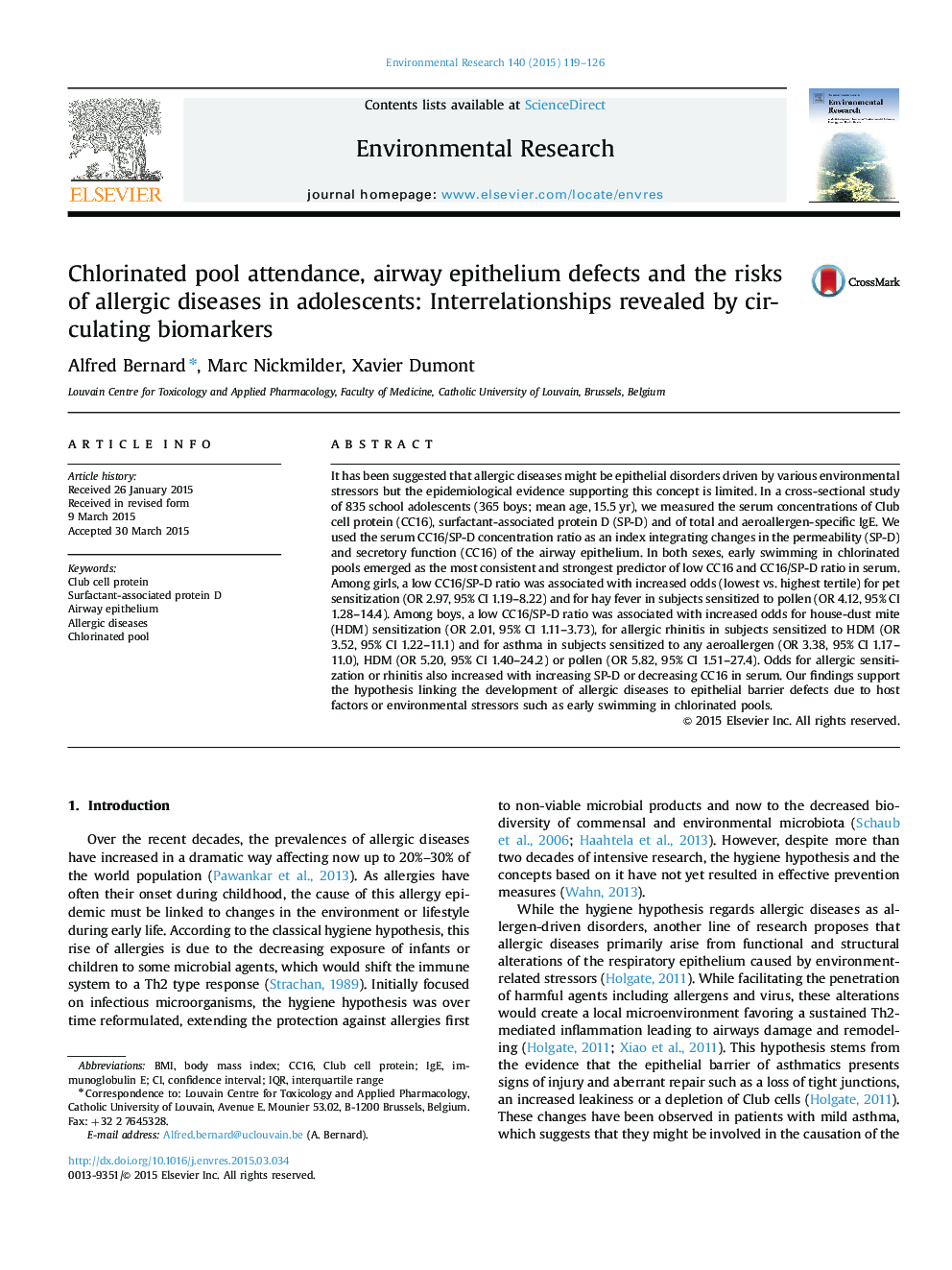| کد مقاله | کد نشریه | سال انتشار | مقاله انگلیسی | نسخه تمام متن |
|---|---|---|---|---|
| 6351902 | 1622561 | 2015 | 8 صفحه PDF | دانلود رایگان |
عنوان انگلیسی مقاله ISI
Chlorinated pool attendance, airway epithelium defects and the risks of allergic diseases in adolescents: Interrelationships revealed by circulating biomarkers
ترجمه فارسی عنوان
غربالگری استخر کلر، نقص اپیتلیوم هوایی و خطرات بیماری های آلرژیک در نوجوانان: روابط بین الملل توسط انتشار بیومارکرها
دانلود مقاله + سفارش ترجمه
دانلود مقاله ISI انگلیسی
رایگان برای ایرانیان
موضوعات مرتبط
علوم زیستی و بیوفناوری
علوم محیط زیست
بهداشت، سم شناسی و جهش زایی
چکیده انگلیسی
It has been suggested that allergic diseases might be epithelial disorders driven by various environmental stressors but the epidemiological evidence supporting this concept is limited. In a cross-sectional study of 835 school adolescents (365 boys; mean age, 15.5Â yr), we measured the serum concentrations of Club cell protein (CC16), surfactant-associated protein D (SP-D) and of total and aeroallergen-specific IgE. We used the serum CC16/SP-D concentration ratio as an index integrating changes in the permeability (SP-D) and secretory function (CC16) of the airway epithelium. In both sexes, early swimming in chlorinated pools emerged as the most consistent and strongest predictor of low CC16 and CC16/SP-D ratio in serum. Among girls, a low CC16/SP-D ratio was associated with increased odds (lowest vs. highest tertile) for pet sensitization (OR 2.97, 95% CI 1.19-8.22) and for hay fever in subjects sensitized to pollen (OR 4.12, 95% CI 1.28-14.4). Among boys, a low CC16/SP-D ratio was associated with increased odds for house-dust mite (HDM) sensitization (OR 2.01, 95% CI 1.11-3.73), for allergic rhinitis in subjects sensitized to HDM (OR 3.52, 95% CI 1.22-11.1) and for asthma in subjects sensitized to any aeroallergen (OR 3.38, 95% CI 1.17-11.0), HDM (OR 5.20, 95% CI 1.40-24.2) or pollen (OR 5.82, 95% CI 1.51-27.4). Odds for allergic sensitization or rhinitis also increased with increasing SP-D or decreasing CC16 in serum. Our findings support the hypothesis linking the development of allergic diseases to epithelial barrier defects due to host factors or environmental stressors such as early swimming in chlorinated pools.
ناشر
Database: Elsevier - ScienceDirect (ساینس دایرکت)
Journal: Environmental Research - Volume 140, July 2015, Pages 119-126
Journal: Environmental Research - Volume 140, July 2015, Pages 119-126
نویسندگان
Alfred Bernard, Marc Nickmilder, Xavier Dumont,
